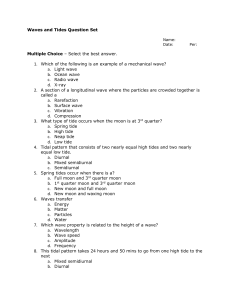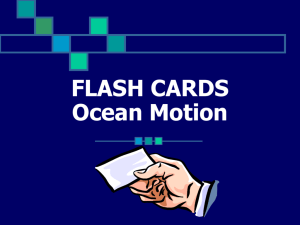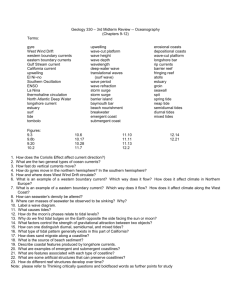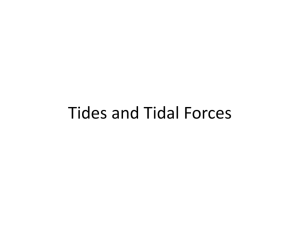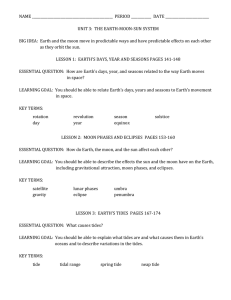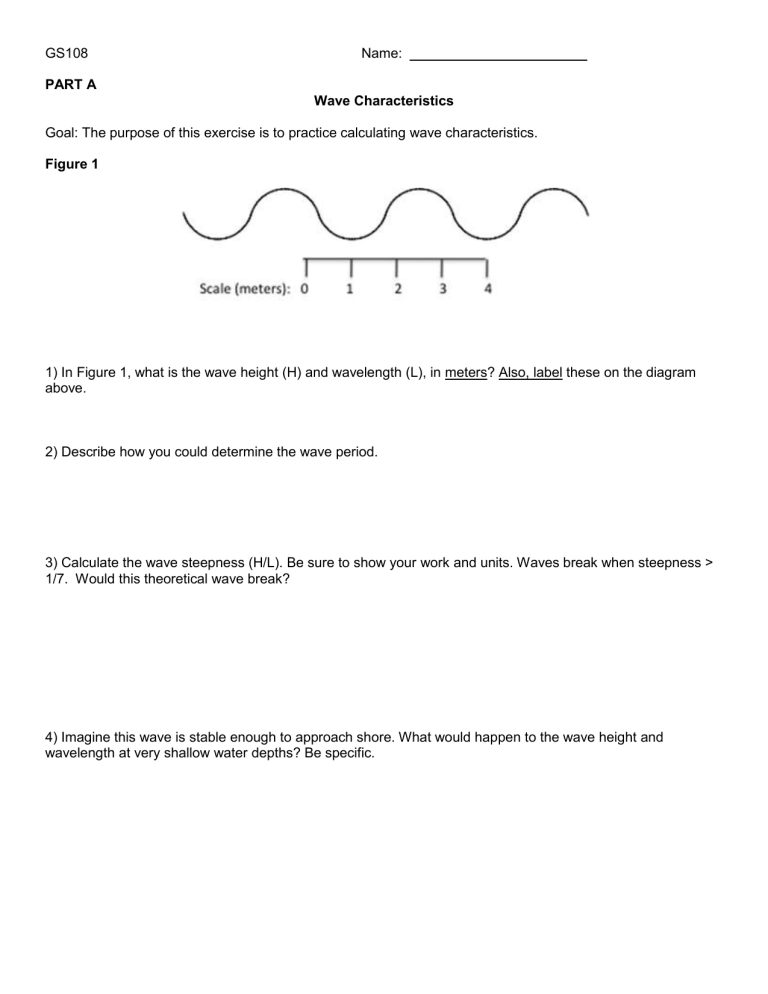
GS108 Name: PART A Wave Characteristics Goal: The purpose of this exercise is to practice calculating wave characteristics. Figure 1 1) In Figure 1, what is the wave height (H) and wavelength (L), in meters? Also, label these on the diagram above. 2) Describe how you could determine the wave period. 3) Calculate the wave steepness (H/L). Be sure to show your work and units. Waves break when steepness > 1/7. Would this theoretical wave break? 4) Imagine this wave is stable enough to approach shore. What would happen to the wave height and wavelength at very shallow water depths? Be specific. Use your lecture notes, textbook, and the website link below to answer the following questions. You can answer these questions on a separate sheet of paper if you need more room. There are some good animations at this website—try them—they can help you answer the questions. https://oceanservice.noaa.gov/education/tutorial_tides/welcome.html 1) In your own words, what causes the tides? Be complete in your answer. 2) The sun is much more massive than the moon, why does the moon have more of an effect on the tides? 3) Draw the relative position of the sun and the moon during the two “spring tides” in the tidal cycle. 4) Draw the relative position of the sun and the moon during the two “neap tides” in the tidal cycle. Waxing crescent, 49% of full 5) The moon is in first-quarter phase (waxing). What kind of effect does this have on the tides? Does it produce neap or spring tides? Why? 6) What is the difference between diurnal, semidiurnal, and mixed semidiurnal tide cycles? 7) The figure below shows sea level changes at South Beach, Oregon. MLLW is 0 feet, and is used as a point of reference. What type of tidal pattern is on the Oregon Coast (diurnal, semidiurnal, or mixed semidiurnal)? Explain your answer, and make sure to check that you are looking at the tidal variation in one 24-hr day.


